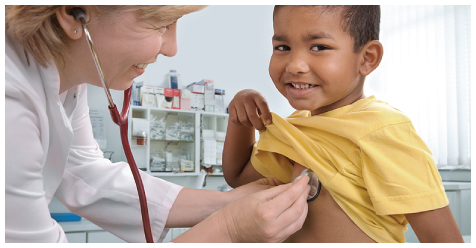Resources for Medical Providers
Prenatal alcohol exposure is a leading preventable cause of birth defects and developmental disabilities.[1] In-utero alcohol exposure can cause a wide range of effects known as fetal alcohol spectrum disorders (FASD). FASD can include physical, mental, behavioral, and learning disabilities with lifelong implications.[2] Health care providers have an important role to play in preventing alcohol-exposed pregnancies and FASD. Providing screening, information, and support is equally as important during the preconception stage as it is during prenatal care in order to support planned, alcohol-free pregnancies.

The American College of Obstetricians and Gynecologists (ACOG) Workgroup on FASD Prevention has created an eModule on FASD for providers that is eligible for two CME credits. Visit this website to access the eModule and other videos and tools from ACOG.
[1] Shmulewitz D, Hasin D. Risk factors for alcohol use among pregnant women, ages 15-44, in the United States, 2002 to 2017. Preventive medicine. 2019;124:75-83.
[2] Moore EM, Riley EP. What happens when children with fetal alcohol spectrum disorders become adults? Curr Dev Disord Rep. 2015;2(3):219-227.

In North Carolina, 57% of women drank alcohol before becoming pregnant.
7.3% of women continued drinking alcohol during pregnancy. This means that an estimated 8,628 babies are born alcohol-exposed annually.
Take the pledge from Proof Alliance NC!
In North Carolina...
41% of pregnancies in our state are unplanned.
52% didn’t find out they were pregnant until at least 5 weeks into pregnancy.
57% of individuals who could become pregnant consumed alcohol 3 months prior to pregnancy.
68% of North Carolina women report that not a single health care professional talked to them about how they could improve their health before pregnancy.
Nationally...
Prenatal alcohol exposure is the leading preventable cause of birth defects in the United States.
It is estimated that up to 1 in 20 children have fetal alcohol spectrum disorders (FASD).
The scientific community continues to advise that the healthiest choice and safest choice is to abstain from alcohol during pregnancy.

How can you help?
- Take every opportunity to have conversations with all patients who can become pregnant about alcohol use, before and during pregnancy.
- Ask routinely at every medical appointment, as alcohol use behaviors can change.
- Embed inquiries about alcohol use in general health questions (e.g., wearing seat belts, taking vitamins, stress management, tobacco use, etc.).
- Use effective screening tools.
Let's Talk - Communicating about Alcohol and Pregnancy
A guide to improve patient-provider communication on the risks of alcohol use during pregnancy.
The guide is intended to support CDC and partner organizations in consistently communicating evidence-based messages about alcohol use during pregnancy, fetal alcohol spectrum disorders (FASDs), and alcohol SBI. The guide summarizes research on healthcare professional and patients’ attitudes and preferences for messaging. It also shares approaches to encourage alcohol SBI and conversations about alcohol use during pregnancy.
SCHEDULE A
TRAINING
Proof Alliance NC is happy to provide a training about FASD to your staff, providers, clients, and community free of charge. We can offer these trainings virtually or in-person and have a variety of training offerings. Please reach out to discuss this opportunity further.
Provider Resources
• North Carolina Department of Health & Human Services State Center for Health Statistics. North Carolina resident births for 2020 by age of mother and birth order for all women. (116,755 births x 0.0739 exposure rate = 8628)
• North Carolina State Center for Health Statistics. 2020 North Carolina Pregnancy Risk Assessment Monitoring System Survey Results.
• Williams JF, Smith VC. Fetal Alcohol Spectrum Disorders. Pediatrics. 2015;136(5):e1395-406.
• May et al. Prevalence of Fetal Alcohol Spectrum Disorders in 4 US Communities. JAMA. 2018;319(5):474-482.
• Popova S, Lange S, Probst C, Gmel G, and Rehm J. Estimation of National, Regional, and Global Prevalence of Alcohol Use During Pregnancy and Fetal Alcohol Syndrome: A Systematic Review and Meta-analysis. The Lancet Global Health. 2017;5(3), e290-e299.
• Williams JF, Smith VC. Fetal Alcohol Spectrum Disorders. Pediatrics. 2015;136(5):e1395-406.
• 58 O’Leary CM, Bower C. Guidelines for pregnancy: What’s an acceptable risk, and how is the evidence (finally) shaping up? Drug & Alcohol Review. 2012;31(2):170-183.

